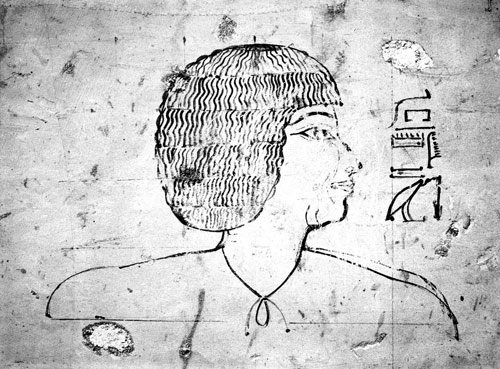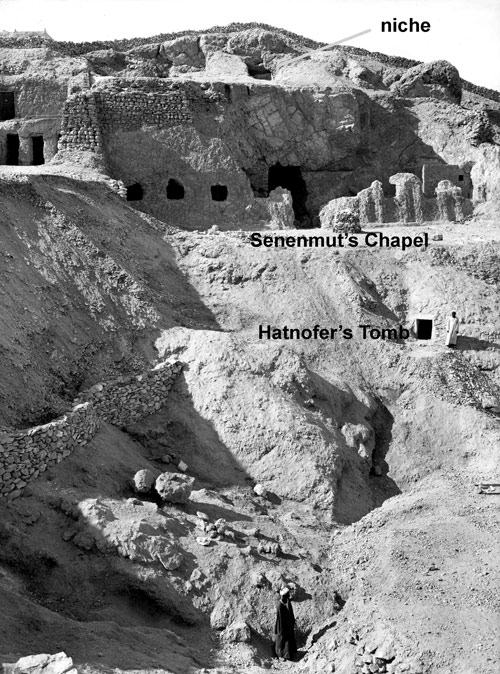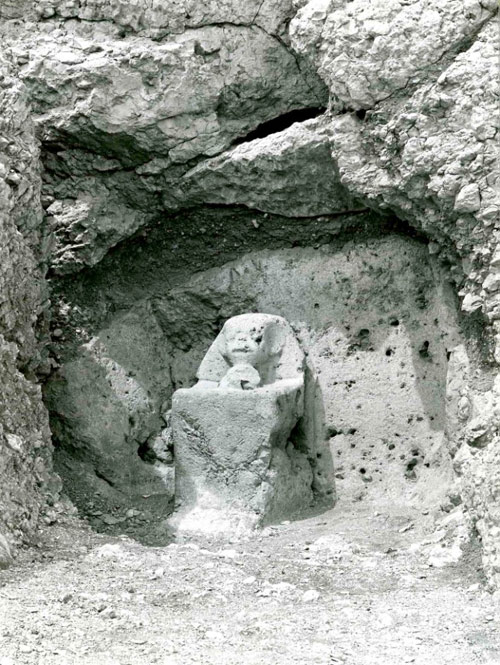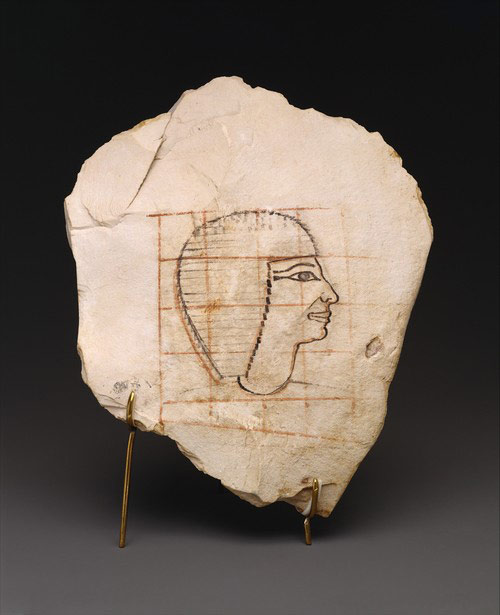 Traveling Exhibitions
Traveling Exhibitions Traveling Works of Art
Traveling Works of Art Conservation Projects
Conservation Projects Excavations
Excavations Fellows
Fellows Exchanges & Collaborations
Exchanges & Collaborations Multiple Items
Multiple Items
The Met Around the World presents the Met’s work via the global scope of its collection and as it extends across the nation and the world through a variety of domestic and international initiatives and programs, including exhibitions, excavations, fellowships, professional exchanges, conservation projects, and traveling works of art.
The Met Around the World is designed and maintained by the Office of the Director.
Traveling
Exhibitions
The Met organizes large and small exhibitions that travel beyond the Museum's walls, extending our scholarship to institutions across the world. See our national and international traveling exhibition program from 2009 to the present.
Traveling
Works of Art
The Met lends works of art to exhibitions and institutions worldwide to expose its collection to the broadest possible audience. See our current national and international loans program.
Conservation
Projects
The preservation of works of art is a fundamental part of the Met's mission. Our work in this area includes treating works of art from other collections. See our national and international conservation activities from 2009 to the present.
Excavations
The Met has conducted excavations for over 100 years in direct partnership with source countries at some of the most important archaeological sites in the world. Today we continue this tradition in order to gain greater understanding of our ancient collections. See our national and international excavation program from the Met's founding to the present.
Fellows
The Met hosts students, scholars, and museum professionals so that they can learn from our staff and pursue independent research in the context of the Met's exceptional resources and facilities. See the activities of our current national and international fellows.
Exchanges & Collaborations
The Met's work takes many forms, from participation in exchange programs at partnering institutions and worldwide symposia to advising on a range of museum issues. These activities contribute to our commitment to advancing the work of the larger, global community of art museums. See our national and international exchange program and other collaborations from 2009 to the present.
 Portrait of Senenmut, steward of Amun, in his Deir el-Bahri tomb (TT 252). Photograph by Harry Burton, 1926–27 (M8C 173). Archives of the Egyptian Expedition, Department of Egyptian Art.
Portrait of Senenmut, steward of Amun, in his Deir el-Bahri tomb (TT 252). Photograph by Harry Burton, 1926–27 (M8C 173). Archives of the Egyptian Expedition, Department of Egyptian Art. The offering chapel of Senenmut (TT 71) with the statue niche above and Hatnefer's tomb below (M16C 213). Photograph by Harry Burton, 1936. Archives of the Egyptian Expedition, Department of Egyptian Art.
The offering chapel of Senenmut (TT 71) with the statue niche above and Hatnefer's tomb below (M16C 213). Photograph by Harry Burton, 1936. Archives of the Egyptian Expedition, Department of Egyptian Art. Statue of Senenmut holding Neferure in the niche above his tomb (M16C 437). Photograph by Harry Burton, 1936. Archives of the Egyptian Expedition, Department of Egyptian Art.
Statue of Senenmut holding Neferure in the niche above his tomb (M16C 437). Photograph by Harry Burton, 1936. Archives of the Egyptian Expedition, Department of Egyptian Art. Entrance of the tomb of Hatnefer and Ramose. Photograph by Harry Burton, January 16, 1936 (M16C 125). Archives of the Egyptian Expedition, Department of Egyptian Art.
Entrance of the tomb of Hatnefer and Ramose. Photograph by Harry Burton, January 16, 1936 (M16C 125). Archives of the Egyptian Expedition, Department of Egyptian Art.
Hatnefer's Chair
New Kingdom, early Dynasty 18, reign of Thutmose II–Early Joint reign, ca. 1492–1473 B.C.
Egypt, Upper Egypt; Thebes, Ilwet el-Sheikh Abdel-Qurna, Tomb of Hatnofer and Ramose (TT 71), outside entrance, MMA 1935–1936
Rogers Fund, 1936 (36.3.152)


Artist's Gridded Sketch of Senenmut
New Kingdom, Dynasty 18, Joint reign of Hatshepsut and Thutmose III, ca. 1473–1458 B.C.
Egypt, Upper Egypt; Thebes, Ilwet el-Sheikh Abdel-Qurna, Tomb of Senenmut (TT 71), below entrance, Radim, MMA 1935–1936
Rogers Fund, 1936 (36.3.252)

Egypt
1926–1927, 1930–1931, 1936
During the 1926–27 field season, the Metropolitan Museum's excavators discovered the entrance of a tomb. Inside they found a sketch of the tomb's owner, who was identified as the steward of Amun, Senenmut, one of the most influential courtiers in the reign of the female pharaoh Hatshepsut. This tomb, located north of the causeway leading to Hatshepsut's temple at Deir el-Bahri, was part of an extraordinary funerary monument that Senenmut prepared for himself in western Thebes. The tombs of most New Kingdom officials had a chapel for funerary offerings that was connected by a shaft or sloping corridor to the burial chamber. Senenmut separated these two essential elements. The Deir el-Bahri tomb (TT 353) was designed for his burial, and his offering chapel (TT 71) was cut into the prominent hill of Sheikh Abd el-Qurna some distance away on the south side of Hatshepsut's causeway.
Senenmut's offering chapel was already known to Egyptologists. However, during the 1930–31 season, Metropolitan Museum Egyptologist Herbert Winlock cleared debris from the ruined structure and studied it more carefully. The chapel revealed some singular architectural features, including a statue carved into a deep niche above the facade. This depicts Senenmut with Hatshepsut's daughter Neferure, whom he served as tutor.
The Tomb of Senenmut's Parents, Hatnefer and Ramose
In 1936, the Metropolitan Museum Egyptian Expedition cleared the hillside below Senenmut's offering chapel (TT 71). Beneath the debris, they found a number of individual burials as well as a sealed doorway that opened into a burial chamber prepared by Senenmut for his elderly mother Hatnefer. The tomb was equipped with food, wine, linens, and personal posessions to accompany Hatnefer into the afterlife. It was also the final resting place of a number of Senenmut's relatives who had died when the family was less prosperous and been transferred to Thebes from another cemetery. These included his father, Ramose, three young women, and three children.
Some of the provisions in Hatnefer's tomb came from royal storerooms and had the seal of Hatshepsut as queen. Other objects had the cartouche of Maatkare, the throne name Hatshepsut took when she became pharaoh and co-ruler with her nephew, Thutmose III. These and other inscriptions suggested to Winlock that Hatshepsut had adopted the names and titles of a pharaoh between the second and seventh years of her nephew's reign.
The Museum's share of the finds from these tombs and the surrounding areas are on view in Egyptian gallery 116.


